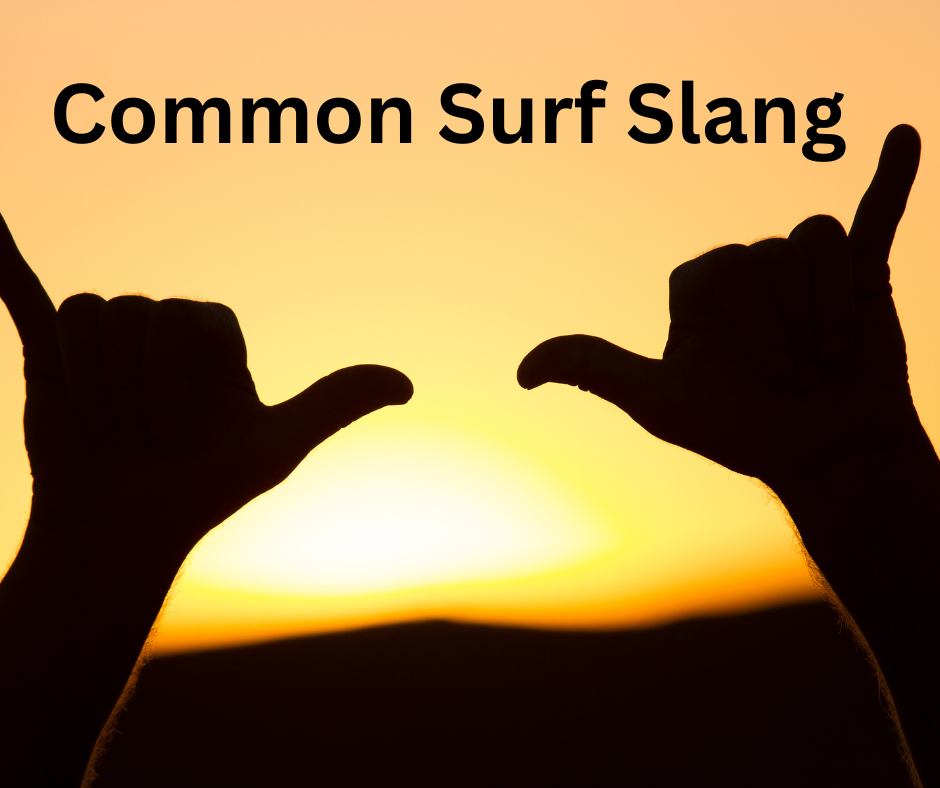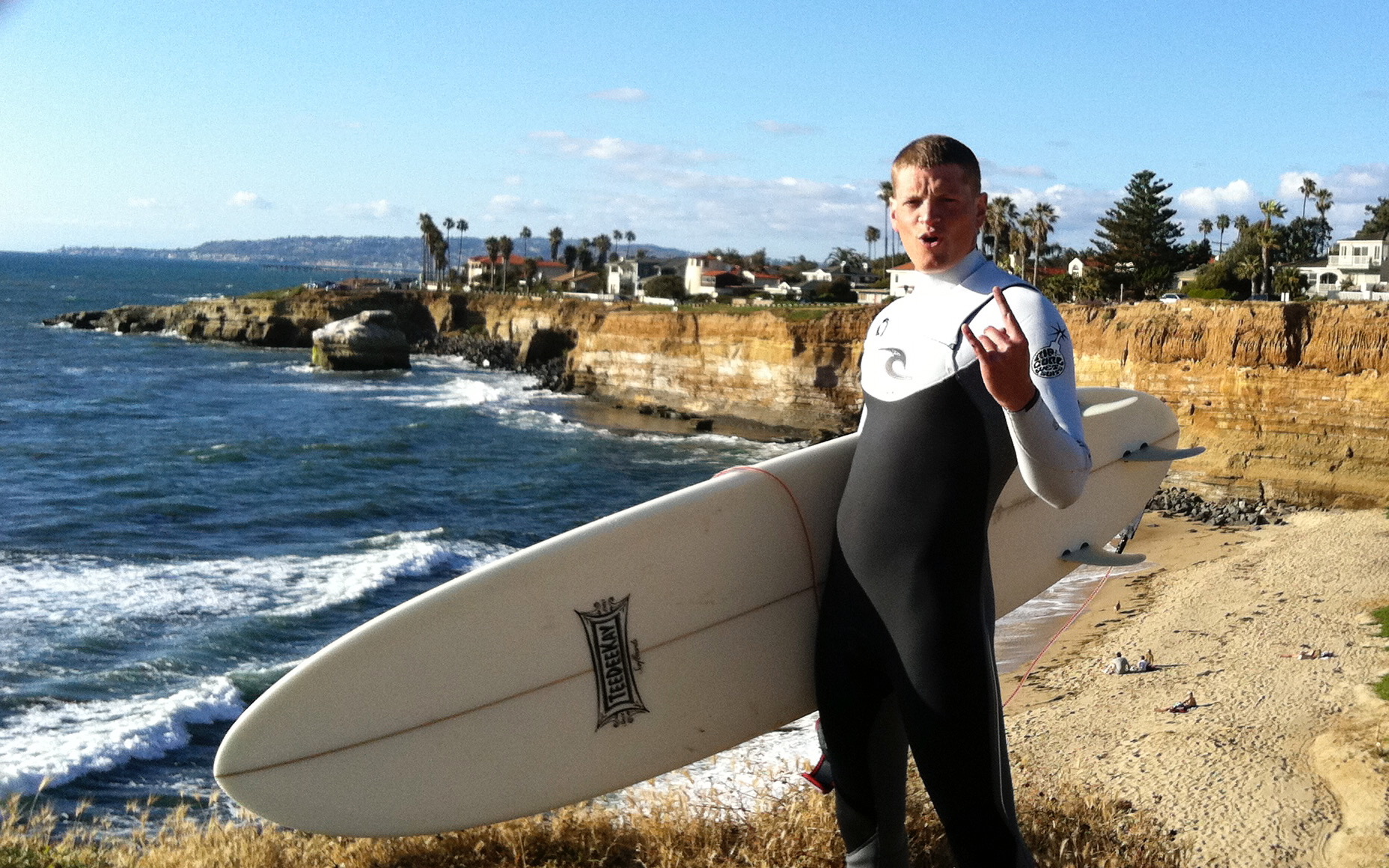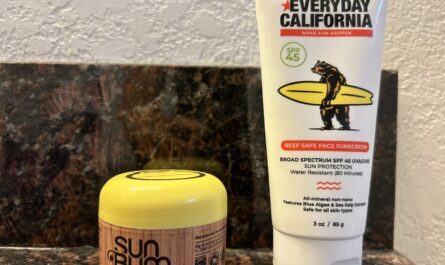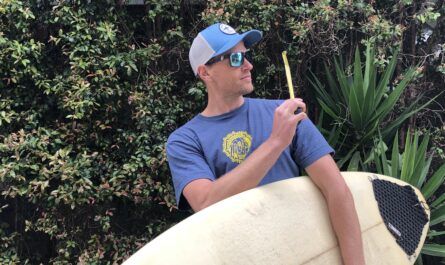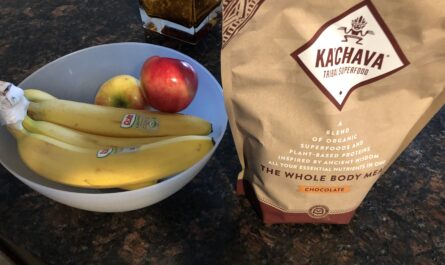Growing up in the Northeast, surf culture was not a thing. However, surf culture and slang permeates the surf scene in Southern California. After years of surfing, I put together a cheat sheet of common surf terms and lingo to avoid being labeled a kook!
Common Surf Terms A to Z
Surfing is a sport filled with its own unique language, full of “common surf terms” that may sound like a foreign language to those not familiar with the waves. From “A-frame” to “Barrel,” surfers have developed a fun vocabulary to describe their sport. Let’s dive into a comprehensive list of some of the most frequently used surf terms, alphabetized from A to Z, along with a brief explanation of the origin of each term.
A-Frame: A wave that breaks evenly in both directions, forming a peak that resembles the letter “A.” Surfers love A-frames for their symmetry and the opportunity to ride in either direction.
Barrel: Also known as a tube or a pit, a barrel is the hollow part of a breaking wave. Surfers aim to ride inside the barrel for an exhilarating experience.
Cutback: A surfing maneuver where the surfer changes direction sharply, carving a turn back towards the breaking part of the wave.
Dawn Patrol: Surfing at first light. Typically known for the best surf conditions due to light winds + calm conditions.
Duck Dive: A technique used to go under an incoming wave while paddling out. Surfers push the nose of their board underwater to pass beneath the wave.
Epic: Used to describe exceptional or outstanding surfing conditions. When the waves are epic, surfers can expect an unforgettable session.
Fin: The small, usually three, projections on the underside of a surfboard that help with stability and control while riding a wave.
Glassy: Refers to the smooth and glossy surface of a wave, usually in the early morning when the wind is calm, creating ideal surfing conditions.
Gnarly: A word used to describe dangerous or difficult conditions in large surf. Alternatively, it could be used to describe how cool or ‘sick’ a surfing move is.
Grom: A word used to describe children or kids that rip, or surf really well
Hang Ten: A classic longboarding maneuver where the surfer walks to the front of the board and hangs all ten toes over the nose.
Impact Zone: The area where waves break, creating turbulent and challenging conditions for surfers trying to paddle out.
Jellies: Marine creatures that surfers sometimes encounter in the water. Getting stung by a jellyfish is not a pleasant experience.
Kook: A term used to describe an inexperienced or clueless surfer. It’s not a label anyone wants to be associated with in the lineup.
Leash: A cord that attaches the surfer’s ankle to the surfboard, preventing the board from getting lost after a wipeout.
Mavericks: A famous big wave surf spot in California known for its massive waves and challenging conditions.
Nose Ride: A longboarding maneuver where the surfer walks to the front of the board and rides on the nose, showcasing skill and balance.
Offshore: Refers to wind blowing from the land towards the ocean, creating clean and organized waves that are ideal for surfing. This is called Santa Ana winds in California.
Paddle Out: The act of paddling through the breaking waves to reach the lineup where surfers wait for waves.
Quiver: A surfer’s collection of boards for different wave conditions and riding styles.
Rip Current: Strong, narrow currents that flow from the shore back towards the ocean, sometimes posing a hazard to surfers.
Rip: A term used to describe someone’s surfing skill. Eg. ‘That grom can rip!’
Shaka: The surf term Shaka has a few similar meanings in surf culture including Hang Loose, Thank You, Take it Easy, Great, + Right on Bro!
Shacked: Another expression for getting barreled, usually on a big wave. Eg. It’s so big, you could stand up inside that wave.
Stoked: A term used to express excitement, happiness, or enthusiasm about surfing or good waves.
Tubes: The art of riding inside the hollow part of a breaking wave, also known as getting barreled.
Undertow: The seaward pull of water following the breaking of a wave, which can be strong and potentially dangerous for swimmers and surfers.
Vibes: The overall atmosphere and energy in the water or lineup. Positive vibes make for a more enjoyable surfing experience.
Learning these “common surf terms” will not only help you understand the conversations in the lineup but also deepen your appreciation for the intricacies of the surfing world. So, grab your board, catch some waves, and immerse yourself in the vibrant surf culture that embraces these terms with passion and enthusiasm.
Why do Surfers use Slang?
Surfers use slang not just for communication but also to create a sense of community and belonging among fellow surfers. The unique language of surfing serves as a form of identity, distinguishing surfers from other sports enthusiasts. Phrases like “hang ten” or “shaka” are not just words; they carry the spirit of surfing culture, connecting individuals through shared experiences and values.
Moreover, surf slang often reflects the close relationship surfers have with nature and the ocean. Terms like “barrel” or “offshore” encapsulate the essence of surfing, highlighting the deep connection surfers feel with the waves and the environment. By using slang specific to their sport, surfers pay homage to the rich history and traditions of surfing, passing down these terms from generation to generation.
In essence, surf slang is more than just a fun way to communicate; it’s a way to celebrate the passion, camaraderie, and love for the ocean that unites surfers worldwide. So, next time you hear a surfer using colorful language in the lineup, remember that behind each term lies a story, a tradition, and a shared love for the waves. Stay stoked! Leave a comment below on your favorite surf terms.
Related: The Basic Rule of Surfing


